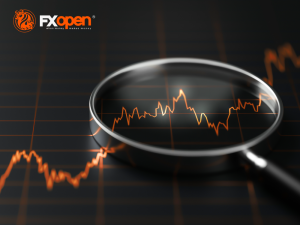Mastering Forex Charts: A Guide for Traders
Forex charts are indispensable tools for currency traders, offering insights into market trends and potential trade opportunities. This article explores their significance and how to utilize them effectively.

In the intricate world of foreign exchange trading, forex charts stand as the compass by which traders navigate the turbulent waters of the currency markets. These charts are not just visual aids but the very foundation upon which successful trading strategies are built. By offering a graphical representation of currency price movements over specific time periods, forex charts provide traders with the clarity and insights needed to make informed decisions. This article delves into the importance of forex charts and offers guidance on how to leverage them for trading success.
Forex charts come in various forms, each providing different perspectives on market data. The most commonly used are line charts, bar charts, and candlestick charts. Line charts are the simplest, tracing the currency pair’s closing prices over time. Bar charts add depth to this picture by showing the opening, high, low, and closing prices (OHLC) for each period. Candlestick charts, originating from Japan, offer a more detailed view, highlighting the relationship between open and close as well as the high and low of the period, making patterns easier to identify.
Understanding how to read and interpret forex charts is fundamental for any trader. Candlestick patterns, for example, can indicate potential market reversals or continuations. Patterns like the “doji,” “hammer,” and “engulfing” candlesticks are key indicators of market sentiment and potential price movements. Similarly, chart formations such as “head and shoulders,” “double tops,” and “triangles” provide insights into market trends and possible entry and exit points.
Technical analysis tools further enhance the utility of forex charts. Indicators such as moving averages, Relative Strength Index (RSI), and Bollinger Bands help traders to identify trends, momentum, and volatility in the market. Moving averages smooth out price data to reveal a clearer trend direction, while RSI indicates whether a currency is overbought or oversold, suggesting potential reversal points. Bollinger Bands measure market volatility, with tighter bands indicating less volatility and wider bands signaling more. These tools, when used in conjunction with chart patterns, can significantly improve a trader’s ability to predict future price movements.
However, mastering forex charts requires more than just an understanding of patterns and indicators. Successful traders combine this knowledge with a keen awareness of market news and economic indicators. Fundamental factors such as interest rates, employment figures, and geopolitical events can dramatically influence currency prices. By correlating chart patterns with fundamental analysis, traders can gain a comprehensive view of the market, enabling more accurate predictions and informed trading decisions.
In conclusion, forex charts are more than just lines and patterns on a screen; they are the essence of forex trading strategy. By accurately reading and interpreting these charts, traders can uncover valuable insights into market trends, sentiment, and potential trading opportunities. Whether you’re a seasoned trader or just starting out, investing time in mastering forex charts is an investment in your trading success. With practice, patience, and continual learning, forex charts can become a powerful tool in your trading arsenal, guiding you through the complexities of the currency markets towards profitable trading outcomes.









